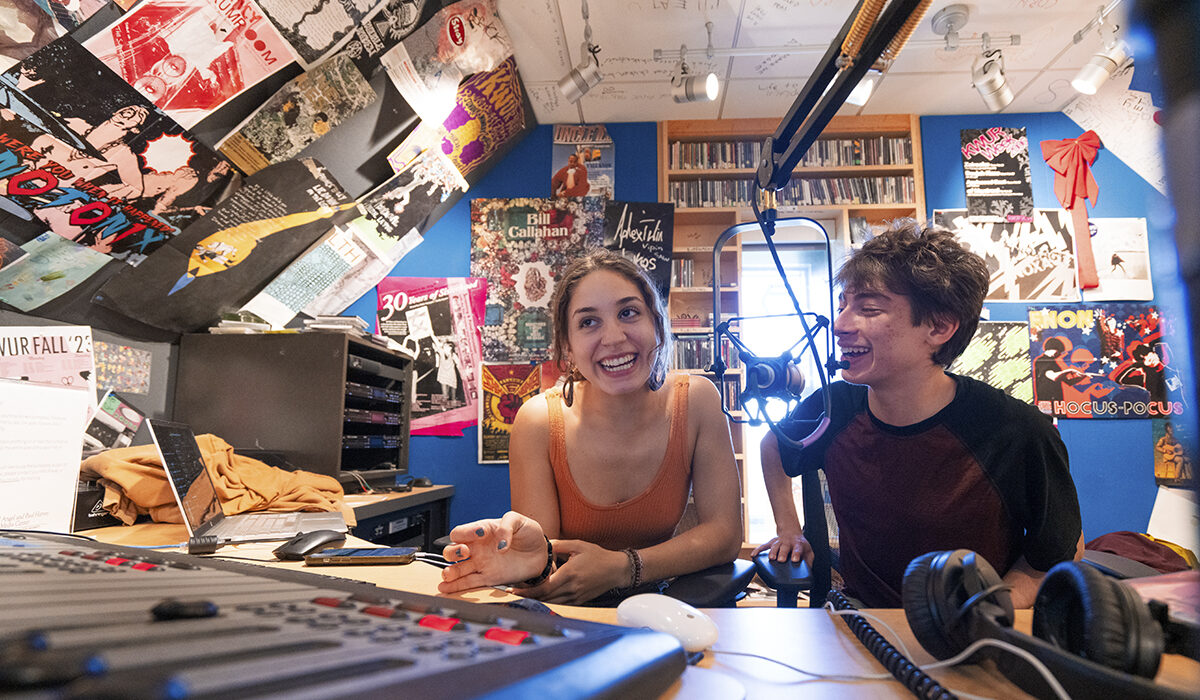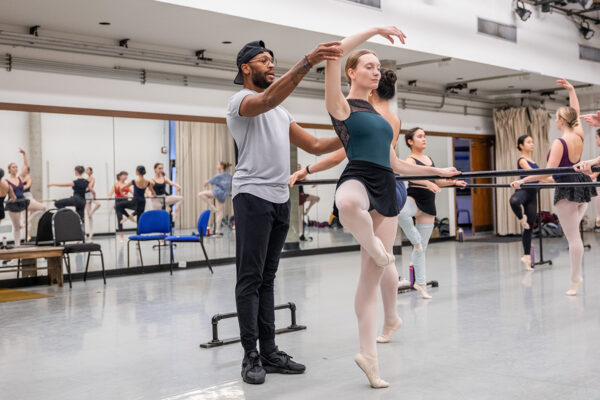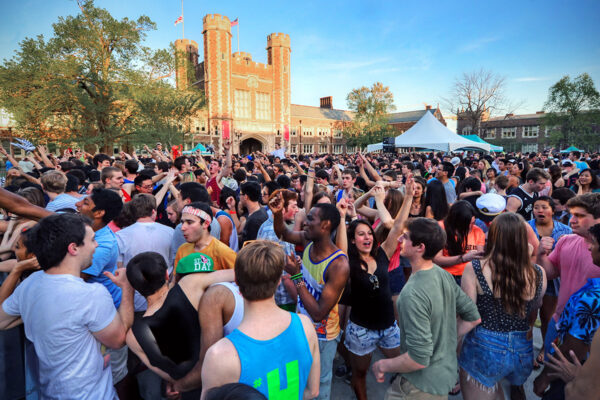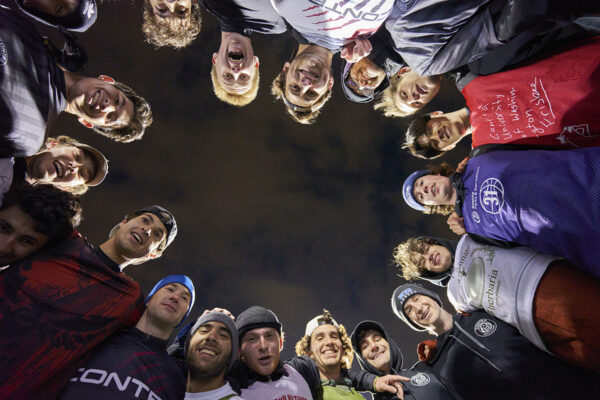“Hello and welcome to Música in Missouri!”
It’s 3 p.m. on a sunny Sunday afternoon, and sophomore Natalia León Díaz is kicking off her weekly DJ set with co-host and fellow sophomore Andrés Orbegozo. The two are DJs for KWUR 90.3 FM Clayton — KWUR for short — Washington University in St. Louis’ student-run radio station since 1976.
Each week, they focus on a genre or a specific country. This week, the theme is guajira.
“Guajira is a music genre derived from punto cubano,” León Díaz says into the mic. “It revolves around themes that pertain to the countryside and has a nostalgic quality.”
León Díaz and Orbegozo are two of the 75 student DJs who host weekly shows that spotlight unique — and often obscure — genres and artists. Other shows feature jazz deep cuts, global R&B and house music. After broadcasting online only for several years, KWUR is back on the airwaves, offering student programmers an opportunity to share their passions and listeners a chance to discover something new.
“We have a huge diversity of shows in terms of types of music, but we also have talk shows, historical dives and even readings,” said senior Spencer Kates, KWUR co-general manager, who hosts the show “À la mode,” a weekly set featuring eclectic rock and folk music.
Students can catch some of those acts live during KWUR Week March 25-29. The annual free concert series will feature hardcore band We Weren’t Invited (8 p.m. Monday, March 25, at Blueberry Hill); a student band showcase (7 p.m. Wednesday, March 27, at Risa Commons on the South 40); jazz artists Daniel Hererra and Braxton Hart Quartet (7 p.m. Thursday, March 28, at Ridgley Hall, Holmes Lounge); and indie act Horsegirl, alt-R&B singer Lydia Newsom and WashU breakout act Non-Euclidean Geometry, which is fronted by Kates (8 p.m. Friday, March 28, at Blueberry Hill).
“We have a record number of DJs this year, and KWUR has had a growing community outside of our DJs, so we are expecting a great turnout,” Kates said. “I am really looking forward to our student show. This is the first time in KWUR history where we have a dedicated show for students during KWUR Week, and I can’t wait to see them play.”
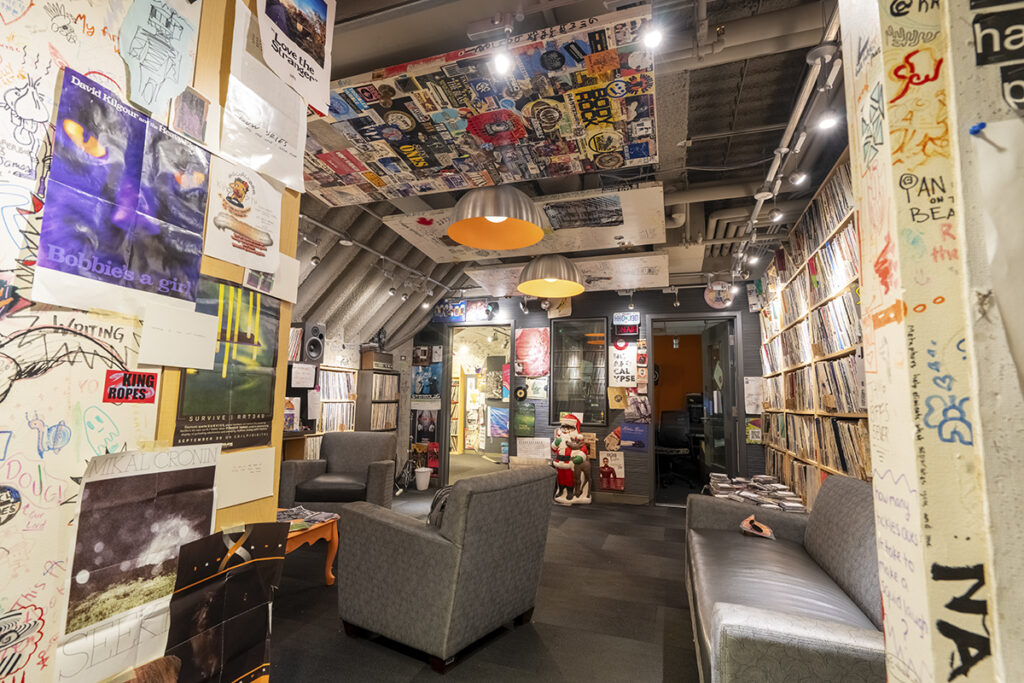
KWUR broadcasts on 90.3 FM using a 10-megawatt signal, which only reaches about two to three miles beyond the Danforth Campus. For context, Kates said many college radio stations operate on 1,000 watts, while commercial radio stations usually broadcast on 10,000 to 100,000-watt signals.
To supplement this limited reach, DJs stream live audio through the platform Mixlr, allowing people to listen all over the world. On this Sunday, León Díaz’s family is tuning in from Puerto Rico.
Different platforms, however, come with different rules. On Mixlr, DJs can play music directly from streaming sources such as Spotify and Apple Music. But per Federal Communications Commission guidelines, radio stations must own copies of the music they play on air. In a world where most young people don’t own the music they listen to, this can pose a challenge. Luckily, the KWUR studio is stacked with decades of vinyl records, cassette tapes and CDs, all available to DJs for playing on air.
KWUR has its own policies as well. Because the station’s mission is to share music that people may not otherwise encounter, DJs must play three new releases per show and songs with fewer than 10 million streams on Spotify. Even with these restrictions, DJs get plenty of creative liberty to make shows their own.
“I just love doing it,” Orbegozo said. “Even though I sometimes end up putting the playlist together at 1 in the morning, I just get sucked into doing it. It’s really a labor of love.”
